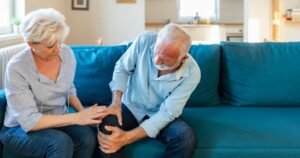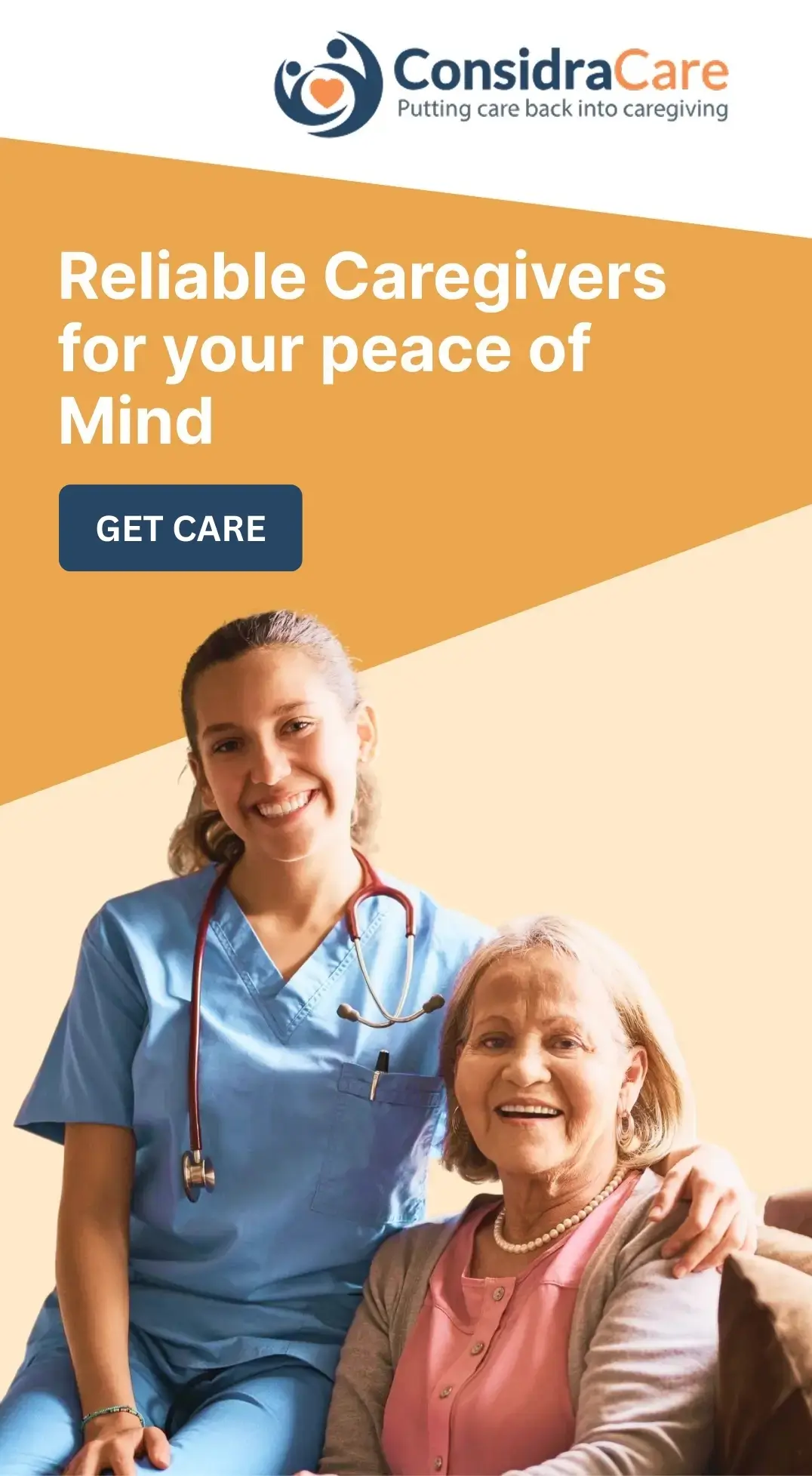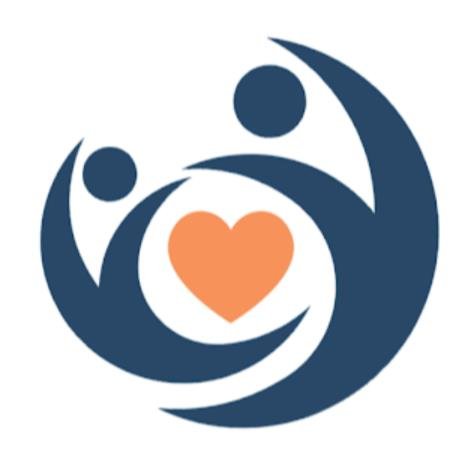These systems offer a practical and affordable alternative to constant in-person care. They make it possible to track health, movement, and daily routines remotely, helping seniors stay safe and comfortable while continuing to live independently at home.
From smartwatches and mobile apps to smart home integrations and wearable devices, today’s monitoring systems give families peace of mind and dependable support when they can’t be there in person.

The Best Elderly Monitoring Systems for Senior Safety
Selecting the right elderly monitoring system depends on the unique health needs of older adults and the specific goals of their caregivers. With the wide range of technologies available today, families can choose solutions that offer peace of mind while empowering seniors to maintain their independence at home.
For many older adults, an effective in-home monitoring system makes it possible to age safely in place rather than transition to a long-term care facility. Beyond enhancing safety, these systems promote overall well-being through features that monitor health metrics, detect emergencies, and enable rapid response when needed.
Below are some of the most reliable and effective in-home monitoring systems designed to support caregiving families.
1. Remote Caregiving System:
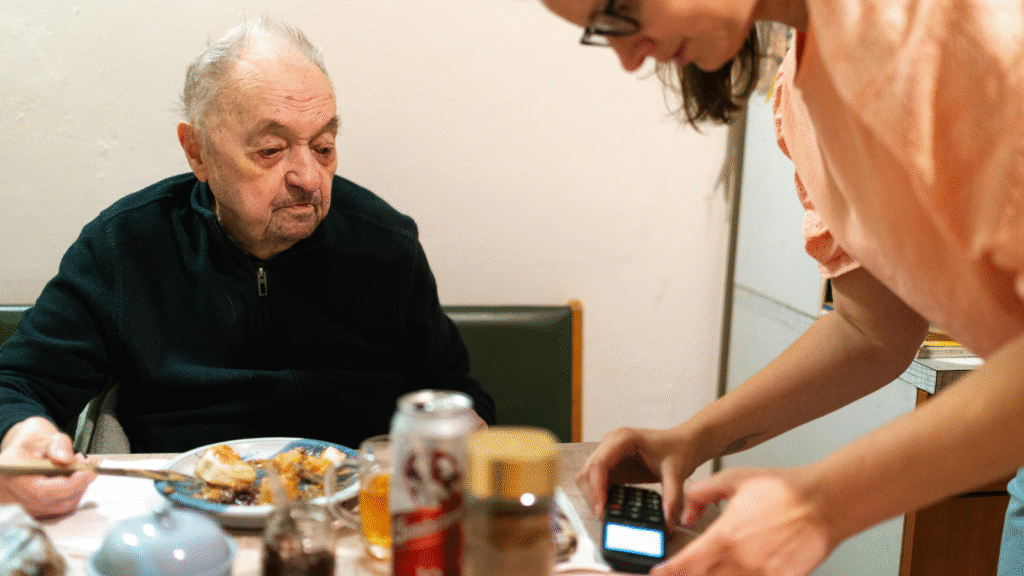
Caring for an aging loved one while balancing work, family, and other commitments can be challenging. Remote caregiving systems offer a practical and compassionate solution, enabling families to stay connected and monitor daily activities from afar.
These systems often integrate with familiar household devices such as televisions, tablets, or smart displays to create an intuitive, interactive platform that keeps seniors engaged while easing the responsibilities of caregivers.
Key Features
- Instant Check-ins: Caregivers can conduct quick video or audio check-ins to ensure their loved one’s well-being without requiring the senior to answer a call manually.
- Two-Way Communication: Automatic video calling on large, easy-to-view screens eliminates the need for seniors to navigate small smartphones or complex devices.
- Routine Tracking: Activity monitoring tools provide insight into daily habits such as television use, meal schedules, or movement patterns to help families maintain consistent routines.
- Scheduling & Reminders: Integrated calendars support medication adherence, appointment tracking, and reminders for household or social activities.
- Photo & Video Sharing: Secure sharing of pictures and short video clips fosters emotional connection and helps older adults feel included and supported.
2. Wearable Monitoring Devices:
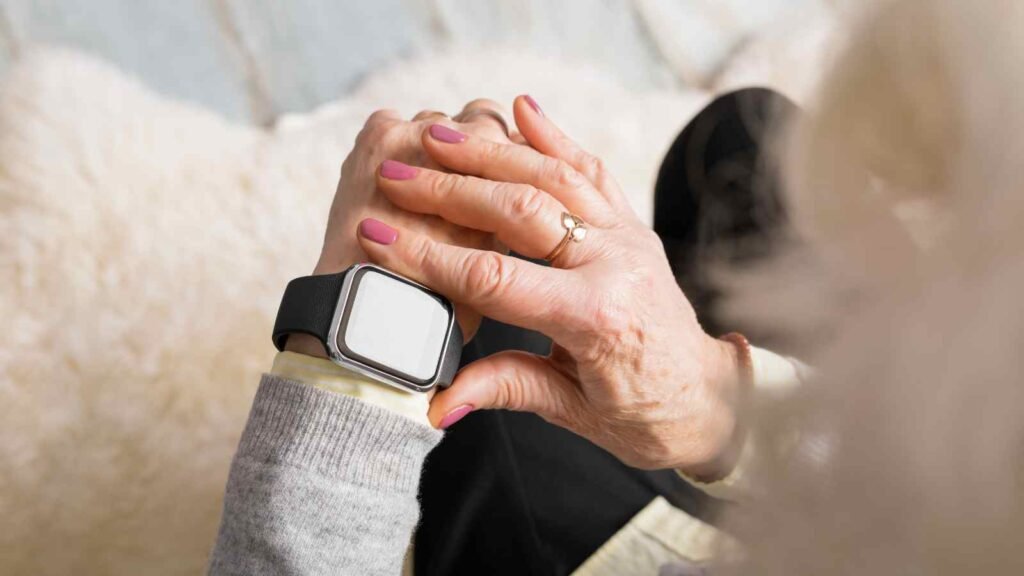
For older adults who value independence and mobility, wearable monitoring devices provide an effective balance between freedom and safety. Designed as necklaces, bracelets, or smartwatches, these discreet devices offer continuous monitoring and immediate access to emergency assistance at home or while on the move.
Key Features
- Extended Coverage Range: Many wearable systems connect to a home base station with wide-ranging signal coverage, ensuring reliable access to help even when the user is away from the central hub.
- Lightweight, Discreet Designs: Available as pendants, wristbands, or smartwatches, these devices integrate seamlessly into daily routines without being cumbersome or noticeable.
- 24/7 Emergency Support: With a single button press, users can reach trained responders who can assess the situation and dispatch emergency services if needed.
- Backup Power Options: Long-lasting batteries and built-in backup power ensure the device remains operational during outages or extended use.
- Caregiver Connectivity: Companion mobile apps allow caregivers and family members to receive instant alerts and monitor safety in real time, providing added reassurance.
3. Health Monitoring Devices:
Comprehensive home health monitoring systems empower older adults to track key vital signs such as blood pressure, blood glucose, weight, and temperature from the comfort of their homes. When irregular readings occur, the system can automatically send alerts to family members or caregivers, allowing early intervention before minor issues develop into medical emergencies.
In addition to tracking vital signs, many devices provide reminders to encourage consistent monitoring and adherence to health routines. The collected data can be shared with healthcare providers, supporting more informed medical decisions and timely adjustments to care plans.
Key Features
- Activity Tracking: Built-in accelerometers and gyroscopes record steps, distance traveled, and calories burned, helping seniors maintain an active lifestyle.
- Heart Rate Monitoring: Real-time sensors track heart rate and rhythm, offering insights into cardiovascular health and exercise intensity.
- Blood Pressure Measurement: Devices accurately record systolic and diastolic pressure, supporting the management of hypertension and overall heart health.
- Blood Glucose Tracking: Essential for individuals managing diabetes, these tools help maintain stable blood sugar levels through regular monitoring.
- Body Temperature Monitoring: Continuous temperature tracking can detect fever or subtle changes that may signal emerging health concerns.
4. Fall Detection Sensors:
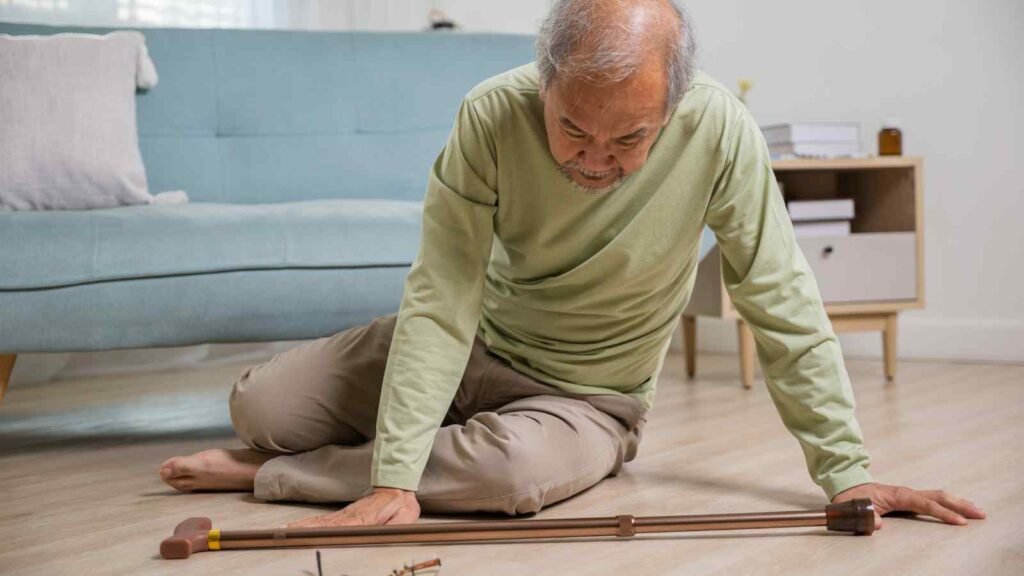
Falls are among the most common and serious risks faced by older adults, often resulting in injuries that can significantly affect independence and overall quality of life. Fall detection sensors are designed to mitigate these risks by automatically detecting when a fall occurs and alerting family members, caregivers, or emergency services for prompt assistance.
These devices use advanced accelerometers and motion-sensing technology to distinguish between normal daily movements and abrupt changes in motion that indicate a potential fall. This ensures timely intervention, even when the individual is unable to call for help.
Ideal Users
- Seniors with Mobility Challenges: Particularly beneficial for older adults who experience balance issues or difficulty walking.
- Individuals with Chronic Health Conditions: Supports safety for those managing conditions such as diabetes, heart disease, or hypertension that may increase fall risk.
- Post-Surgery or High-Risk Individuals: Provides extra protection for those recovering from surgery or prone to dizziness and fainting episodes.
Read More: Autumn Safety Tips for Seniors
5. Bay Alarm Systems:
Bay Alarm Systems are among the most reliable and cost-effective safety solutions for older adults who primarily spend their time at home. With the simple push of a button, these systems connect users directly to a 24/7 monitoring center, ensuring immediate access to emergency assistance whenever it’s needed.
They are particularly valuable for seniors who may require extra support yet wish to maintain the comfort and familiarity of their own homes.
Key Features
- Base Station Console: A central device installed in the home that connects to emergency response teams through a landline or cellular network.
- Battery Backup: Many systems include long-lasting backup batteries some with more than 30 hours of power to ensure continuous operation during outages.
- Medical Information Storage: Certain models allow users to securely store essential medical information, making it readily accessible to emergency responders.
- Mobile Options: In addition to home-based units, many providers offer wearable pendants, wristbands, or smartwatches for protection both inside and outside the home.
6. GPS Tracking Systems:
A GPS tracking system is a compact electronic device that uses satellite technology to monitor real-time location. For older adults living with dementia, Alzheimer’s disease, or other cognitive impairments, these systems provide an essential layer of safety by reducing the risks associated with wandering or disorientation.
For families and caregivers, having access to a senior’s location offers reassurance and peace of mind, knowing that help can be dispatched quickly if needed.
Key Features
- Real-Time Location Monitoring: Provides instant updates on a senior’s whereabouts through connected apps or web platforms.
- Geofencing Alerts: Caregivers can set predefined safe zones such as the home, neighborhood, or nearby park and receive alerts if the individual exits these boundaries.
- Wearable Options: GPS technology can be integrated into discreet devices like watches, pendants, or compact trackers that fit easily into a pocket.
- Emergency Assistance Button: Many models include a dedicated help button, allowing users to call for assistance if they feel unsafe, lost, or disoriented.
- Caregiver Notifications: Family members receive immediate alerts in cases of unusual movement patterns or potential emergencies.
7. Lively:
Lively is a leading provider of mobile medical alert systems designed for active seniors who want protection both at home and on the go. These devices combine fall detection, emergency response features, and advanced GPS technology to ensure help is always within reach.
As one of the pioneers in mobile alert technology, Lively continues to distinguish itself with its combination of reliability, user-friendly design, and integrated caregiver support.
Key Features
- Rapid Emergency Response: Connects users to trained agents who can dispatch help quickly in the event of a fall or emergency.
- Caregiver App Integration: A companion app enables family members to monitor safety, view location updates, and receive real-time alerts.
- Access to On-Call Nurses: Premium plans include 24/7 access to registered nurses for medical advice and urgent health concerns.
- Enhanced Smartphone Features: Devices include 1 GB of free data, brain-training apps, and wellness tools that promote cognitive engagement and overall health.
8. SECOM Smart Wellness:
SECOM Smart Wellness combines advanced home security technology with a personalized approach to senior monitoring. Unlike many standard systems, SECOM allows families to customize their setup to align with specific priorities whether focused on safety, wellness, or enhanced peace of mind.
One of SECOM’s key strengths is its flexibility. Families can decide whether to integrate cameras into their monitoring system, offering a balance between comprehensive oversight and personal privacy an option not always available with other providers.
Key Features
- Customizable Configuration: Design the system to meet individual needs and comfort levels, ensuring tailored support for each household.
- Integrated Security and Wellness Monitoring: Merges traditional home security features with health and well-being tracking for a holistic safety solution.
- Flexible Camera Options: Provides the choice to include or exclude cameras, respecting privacy preferences while maintaining reliable protection.
Read More: 9 Common Home Safety Hazards and Their Practical Solutions
How to Choose the Right Personal Alarm or Senior Monitoring Device
When selecting a monitoring device for an elderly loved one, safety, practicality, and ease of use should be top priorities. Consider the following key factors:
1. Determine Needs and Preferences:
Identify your loved one’s specific requirements. Do they need a wearable device for use outside the home or a stationary system for in-home safety? Would GPS tracking enhance peace of mind, or is a simple emergency alert sufficient?
2. Explore Different Device Types:
Compare options ranging from basic pendants to advanced systems with fall detection, GPS tracking, and mobile connectivity. Focus on features that best fit your loved one’s health and lifestyle.
3. Prioritize Ease of Use:
Choose a device with intuitive controls, large buttons, clear audio, and simple setup. Voice-activated or automatic features can further increase confidence and safety.
4. Understand Costs and Fees:
Evaluate both upfront and ongoing costs. Some systems have low initial prices but higher monitoring fees, while others include equipment costs with lower monthly payments.
5. Look Into Customer Support and Reliability:
Opt for providers with proven reliability and responsive customer service. Review user feedback, confirm 24/7 support availability, and assess response times.
6. Read Reviews and Get Recommendations:
Consult user reviews, healthcare professionals, or trusted contacts to gain insights into real-world performance and reliability.
By considering these factors, you can choose the most suitable personal alarm or senior monitoring device to help ensure your loved one’s safety, independence, and well-being.
How ConsidraCare Can Help?
While monitoring devices offer valuable support, they cannot replace the personalized attention and compassionate care that a professional live-in caregiver provides. A trained caregiver not only ensures safety and immediate response during emergencies but also assists with daily activities, medication management, mobility, and emotional companionship areas where technology alone falls short.
This human connection promotes greater comfort, independence, and overall well-being, making professional caregiving a more comprehensive and reassuring alternative for seniors who require ongoing support.
With ConsidraCare, your loved ones can continue to live independently in the comfort and familiarity of their own home while receiving the extra care and support they need.

Conclusion:
Choosing the right elderly monitoring system is ultimately about finding the right balance between safety, independence, and quality of life. Each senior’s situation is unique, and the most effective solution aligns with their specific health needs, lifestyle, and level of support required.
By prioritizing ease of use, reliability, and responsive assistance, families can ensure their loved ones remain secure and connected. When thoughtfully implemented, these systems not only enhance safety but also empower older adults to age gracefully and confidently in the comfort of their own homes.
FAQs:
1. How do I monitor my elderly parent living alone?
You can monitor an elderly parent using in-home sensors, wearable alert devices, or smart monitoring systems that send real-time updates. Regular check-ins or hiring a caregiver adds an extra layer of safety and companionship.
2. What is the home healthcare monitoring system for the elderly?
The best system depends on needs. Popular options include Lively, Bay Alarm, and SECOM Smart Wellness for reliable monitoring, emergency alerts, and easy use.
3. What is the best monitoring system for the elderly?
Consider the senior’s health, mobility, daily routine, battery life, and support features.
4. What technology is used to help the elderly?
Common technologies include medical alert devices, GPS trackers, health monitors, and smart home sensors—all designed to enhance safety and independence.
5. What is a senior help button?
A senior help button is a wearable device that connects directly to emergency support, usually equipped with fall detection and two-way communication capabilities.
6. What is the best way to track elderly parents?
A GPS-enabled device such as a watch or pendant offers real-time location tracking and alerts if a senior leaves a designated safe area.

